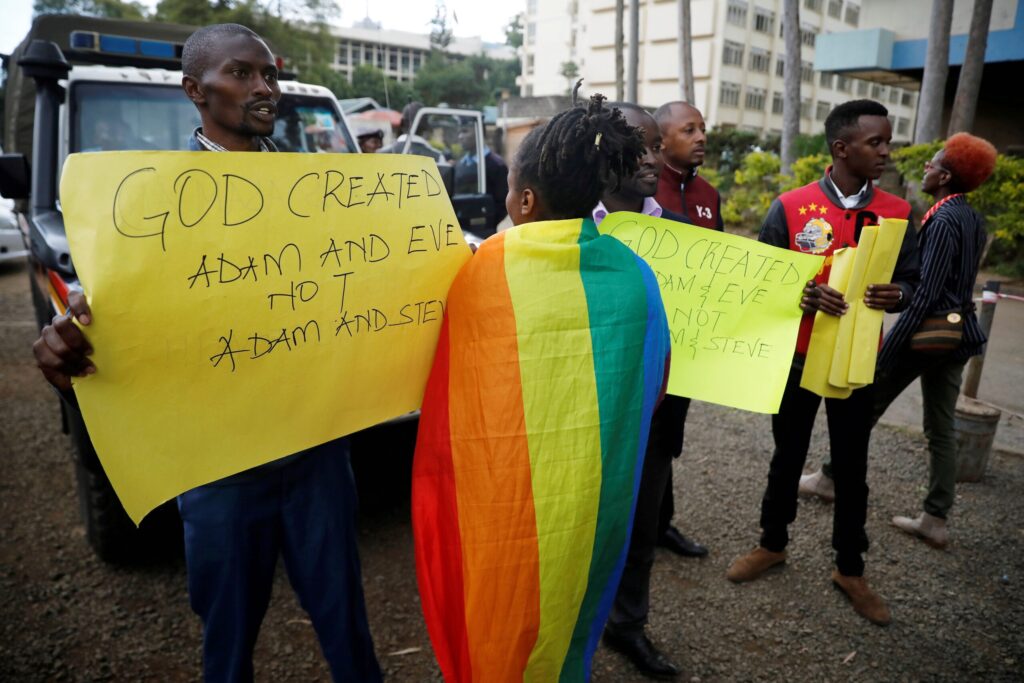The anti-gender movement has gained significant traction in recent years, posing a formidable challenge to the progress made in gender equality and LGBTQ+ rights.
This movement, often characterised by its opposition to what it terms “gender ideology,” seeks to undermine the hard-won rights of individuals based on their gender identity and sexual orientation.
In this article, we will explore effective strategies to counter this rising tide and foster a more inclusive society.
Understanding the Anti-Gender Movement

The anti-gender movement is not a singular entity but rather a coalition of various groups, including religious organisations, political parties, and civil society actors.
These groups often share a common goal: to roll back the rights of women and LGBTQ+ individuals.

They frame their arguments around the preservation of traditional family structures and societal norms, often invoking fear and misinformation to rally support.
Key Characteristics
- Mobilisation of Support: Anti-gender groups have demonstrated a remarkable ability to mobilise public sentiment against gender equality initiatives. This is often achieved through targeted campaigns that exploit societal fears regarding changing gender norms.
- Political Influence: Many anti-gender movements have successfully infiltrated political discourse, influencing legislation and public policy. This has resulted in the introduction of laws that restrict reproductive rights and undermine LGBTQ+ protections.
- Cultural Backlash: The movement often capitalises on cultural anxieties, portraying gender equality as a threat to traditional values. This narrative resonates with individuals who feel disempowered by rapid societal changes.
The Impact on Gender Rights
The rise of the anti-gender movement has had profound implications for gender rights globally.
In many regions, we are witnessing a rollback of rights that were previously considered secure. This includes restrictions on access to reproductive healthcare, legal recognition for transgender individuals, and protections against discrimination.
Case Studies
- United States: Following the Supreme Court’s decision to overturn Roe v. Wade, numerous states have enacted laws that severely limit access to abortion services. Additionally, a record number of anti-LGBTQ+ bills have been introduced, targeting transgender youth and their access to healthcare.
- Eastern Europe: Countries like Hungary and Poland have seen a rise in anti-gender rhetoric, with governments enacting policies that restrict LGBTQ+ rights and promote traditional family values.
- Africa: In nations such as Ghana, new laws criminalising homosexuality have emerged, often with the backing of religious groups and conservative politicians.
Strategies to Counter the Anti-Gender Movement
To effectively combat the anti-gender movement, it is essential to adopt a multifaceted approach that engages various stakeholders, including activists, policymakers, and the general public.
Here are several strategies that can be employed:
1. Promote Inclusive Narratives
One of the most effective ways to counter anti-gender rhetoric is to promote inclusive narratives that highlight the shared values of equality and human rights. This involves:
- Storytelling: Sharing personal stories from individuals affected by anti-gender policies can humanise the issue and foster empathy. These narratives can be powerful tools for change, illustrating the real-life consequences of discriminatory laws.
- Common Ground: Emphasising shared values, such as family, community, and dignity, can help bridge divides. By framing gender equality as a universal human right, advocates can appeal to a broader audience.
2. Engage in Dialogue
Engaging in constructive dialogue with those who may not fully support gender equality is crucial. This can be achieved through:
- Community Outreach: Hosting community forums and discussions can provide a platform for open dialogue. This allows individuals to express their concerns and misconceptions while also receiving accurate information about gender rights.
- Education Campaigns: Implementing educational initiatives that inform the public about gender issues can help dispel myths and reduce prejudice. This includes workshops, seminars, and online resources that address common misconceptions.
3. Strengthen Legal Protections
Advocating for robust legal protections for gender rights is essential in countering the anti-gender movement. This can involve:
- Policy Advocacy: Lobbying for the enactment of laws that protect against discrimination based on gender identity and sexual orientation. This includes pushing for comprehensive anti-discrimination legislation and protections for reproductive rights.
- International Standards: Leveraging international human rights frameworks to hold governments accountable for their treatment of gender minorities. Engaging with bodies such as the United Nations can amplify advocacy efforts.
4. Mobilise Grassroots Movements
Grassroots movements play a vital role in challenging anti-gender narratives. To mobilise effectively, activists should:
- Build Coalitions: Forming alliances with other social justice movements can strengthen the fight for gender rights. Collaborating with groups focused on racial justice, economic equality, and environmental issues can create a united front against discrimination.
- Utilise Social Media: Harnessing the power of social media platforms to raise awareness and mobilise support is crucial. Campaigns that go viral can reach a wide audience and galvanise action.
5. Support Feminist Movements
Feminist movements have historically been at the forefront of advocating for gender rights. Supporting these movements can involve:
- Funding Initiatives: Providing financial support to feminist organisations that work on the ground to promote gender equality. This includes funding for advocacy, education, and community outreach programmes.
- Amplifying Voices: Ensuring that the voices of women and gender minorities are heard in decision-making processes. This can be achieved by promoting their representation in political and social spheres.
Conclusion
The rise of the anti-gender movement poses a significant threat to the progress made in gender equality and LGBTQ+ rights.
However, by adopting a multifaceted approach that includes promoting inclusive narratives, engaging in dialogue, strengthening legal protections, mobilising grassroots movements, and supporting feminist initiatives, we can effectively counter this movement.
It is imperative that we stand together to protect the rights of all individuals, regardless of their gender identity or sexual orientation, and work towards a more equitable and just society.
The southern Africa Marang Fund for LGBTIQ is a new initiative to support marginalised movements and communities. Applications are now open. Find out more on the Gender Links webpage here.
By fostering understanding and solidarity, we can create a world where everyone is free to express their identity without fear of discrimination or violence.
The fight for gender rights is not just a struggle for a specific group; it is a fight for the fundamental rights of all humanity. Together, we can make a difference!
You can also join our free course here!


Leave a Reply